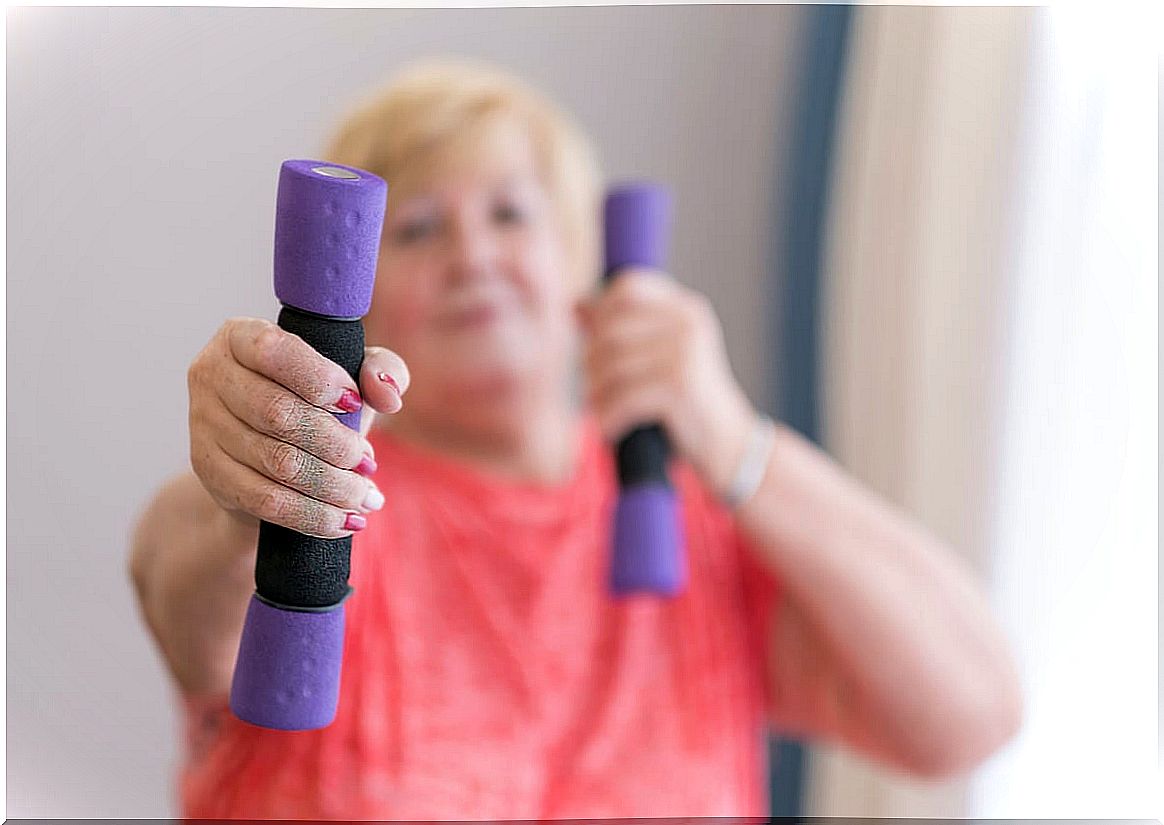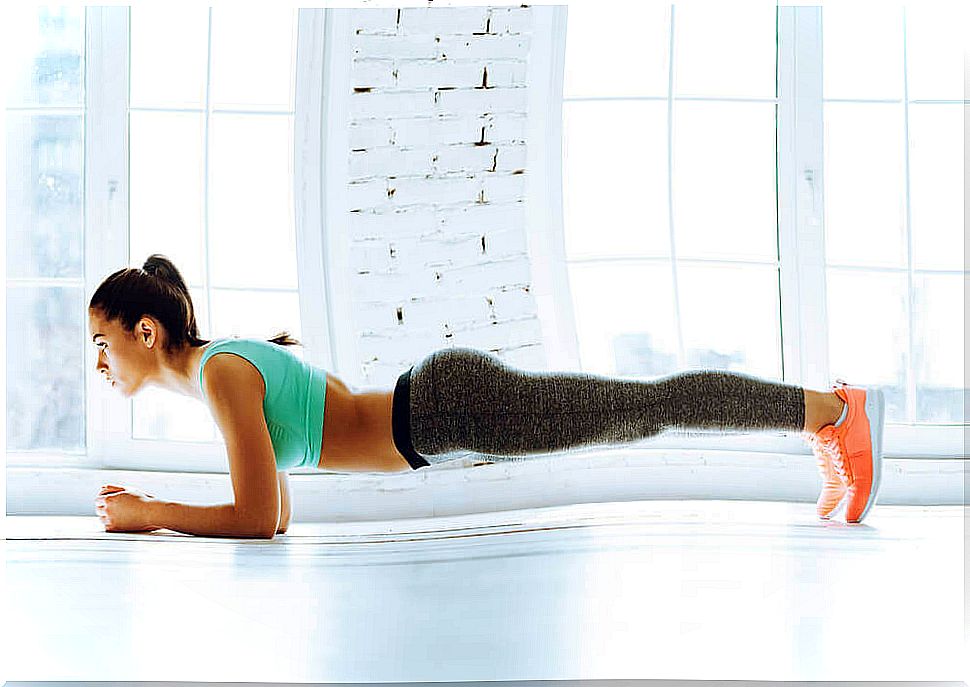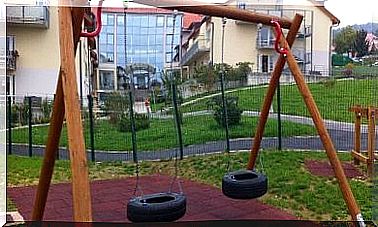Isotonic Exercises And Isometric Exercises: What Are Their Differences?
Isotonic exercises and isometric exercises are two ways of exercising strength that complement each other to give variety and breadth to our training routines. In fact, incorporating both maximizes the benefit of each session.
Both isotonic and isometric exercises offer different ways of working and, with them, different advantages. As for which one is better, there is no valid answer, since it depends on what the objectives are and what physical situation each person is in.
Isotonic exercises
The word isotonic has its origin in the Greek terms iso (which means ‘equal’) and tones (which means ‘tone’). The term describes a type of exercise in which the muscles maintain the same tension while performing a movement.
This means that during isotonic exercises the muscle contracts and shortens or lengthens against a constant load. Although the length of the muscle changes, the load remains the same during the exercise.
With this in mind, it is important to differentiate between two types of isotonic contractions: concentric and eccentric.
- Concentric contraction occurs when the muscle contracts and shortens during exercise against a constant load. For example, any weight lifting involves concentric contractions when lifting or approaching the load.
- Eccentric contraction occurs when the muscle contracts and lengthens during exercise against a constant load. In lifting weights, the eccentric phase occurs when the initial position is recovered, that is, when the weight is lowered or moved away.

Advantages and examples
Isotonic exercises offer many benefits and advantages during training. Among them, the following stand out:
- They favor an increase in blood supply to the muscles.
- Improve muscular endurance
- With fewer repetitions than with other types of strength exercises, you can increase strength and muscle mass.
- They allow the development of force throughout the range of motion.
- All muscle groups can be easily exercised using localized or general exercises.
- They allow you to train the whole body for the movements necessary for daily activities.
- They favor an increase in bone density.
- They help maintain metabolism as you age.
- They promote the reduction of body fat, while helping to increase the fat-free mass
Isotonic exercises popular are the curl of biceps, curl triceps, dominated the press bench, the press of shoulders, burpess and crunch crunches, among many others.
On the other hand, many yoga poses, such as the warrior in any of its versions, the tree, the chair or the dancer, for example, are also very beneficial and challenging isometric exercises.
Here are some examples of popular isotonic exercises.
Squats
Squats are a very popular example of isotonic exercise. You don’t need any equipment to do them, but weights, bars, or rubber bands can be used to increase the load and intensity.
- Stand with your legs shoulder-width apart, with your feet facing forward. If you use weight, put it on your shoulders. If you are using rubber bands, hold them the same way as if you were holding a bar.
- Without changing the posture of the trunk, that is, without leaning forward, lower your hips, bending your knees. The hips should not drop below the knees.
- Return to the starting position slowly, making a strong contraction in the glutes.
This exercise allows for variations. For example, the legs can be brought closer together, placing them shoulder-width apart. You can also spread them further and place your feet out, so that the knees when lowering are out as well.
Straight leg deadlift
The straight leg deadlift is performed with one bar or two dumbbells. In addition to being very simple to do, it is one of the best compound exercises to gain strength and muscle mass.
- Stand tall, holding your weight in front of your thighs.
- Next, lean forward with your back straight. Go as low as you can without bending your knees.
- Squeeze your glutes to raise your torso and regain the starting position.
Push-ups (push-ups)
Push-ups or push-ups are another popular type of isotonic exercise. Neither equipment is needed to carry them out.
- Lie face down on a mat, in a plank position, with your body upright on your feet and your arms outstretched. The hands are just below the shoulders or a little further apart, depending on the goal you want to achieve with the exercise.
- Slowly lower your chest to the ground, flexing your arms and letting your elbows go out to the sides. Don’t go all the way to the ground.
- Regain the starting position by slowly stretching your arms.
Isometric exercises
The word isometric has its origin in the Greek terms iso (which means ‘equal’) and metron (which means ‘measure’). The term describes a type of exercise in which the same measure, dimension or length of the muscles is maintained.
In other words, during isometric exercises the length of the muscle or the angle of the joint does not change during the contraction. That is, the muscles involved during the exercise remain the same length. The plank is probably the most popular isometric exercise.
Advantages and examples
The most prominent benefits and advantages of isometric exercises are the following:
- They can be done with little or no equipment.
- If they are carried out with weight they can increase the size of the muscles.
- Maximum muscle contraction can be achieved and maintained.
- They activate 5% more muscle fibers than isotonic training when using maximum effort.
- They promote the development of strength in specific muscle groups
- They improve bone density and cholesterol levels.
- They can have a positive effect on blood pressure.
- They promote the strengthening of the joints from all angles.
Squat on the wall
The wall squat is a very easy exercise to do and, at the same time, very beneficial. To do this you need a sturdy wall.
- Stand in front of the wall, with your back. Lean against her so that your back is in full contact.
- Lower slowly, with small steps forward, without separating your back from the wall, until your hips are at the level of your knees.
- Stretch your arms out in front, parallel to the ground, to make it easier to maintain your posture and balance.
- Hold the pose for at least 15-20 seconds.
Table over the forearms
The forearm plank is a very popular isometric exercise in which all the core muscles are involved.
- Get on the floor on a mat, face down, with your arms bent and your elbows under your shoulders.
- Your feet should be slightly shoulder-width apart.
- Raise your hips so that it is in line with your shoulders, but not above.
- Contracting your glutes, abs, and pelvic floor, hold the pose for at least 30 seconds.

Glute bridge
The glute bridge is another very popular, easy-to-do, and highly effective isotonic exercise .
- Lie on the floor, face up, with your legs bent and your heels as close to your glutes as possible.
- The hands are placed along the trunk.
- With the knees forward, avoiding that they separate and look out, raise the hips. The hands can be supported or interlocked under the buttocks.
- Hold the pose for at least 10-15 seconds and lower slowly, rounding your back.
Isotonic exercises and isometric exercises: final recommendations
Many experts consider that isotonic training offers more benefits as functional training, since they reproduce movements that we use in daily life. In addition, they help both to reduce body fat and increase muscle mass.
However, isometric exercises also contribute to improving daily performance, since they engage the core muscles to stabilize the body in its posture. In addition, isometric exercises are very suitable for physical recovery and also in cases of rehabilitation; maintain muscle mass or, at least, decrease loss of strength.
Whenever possible, combining isotonic and isometric exercises will help you achieve better results during strength training.








